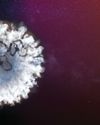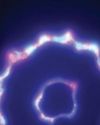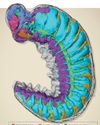
IN JUNE 2021, A HEAT DOME PULVERIZED MY hometown of Portland, Oregon, delivering an almost psychedelically high temperature of 116°F, killing 69 people, and smashing any illusions that the Pacific Northwest offered a relative haven from the scourge of a warming planet.
We now know that if Oregon hopes to avoid another heat dome, or if California hopes to dampen wildfires, or if Florida hopes to stanch the rise of coastal sea waters, we need to harness the elements of greener energy. Fortunately, some of the brightest scientific minds are striving to reap these elements from the grist of crisis.
Those earth-saving elements are literally that, elements. Lithium tops the list, along with cobalt, nickel, and manganese. Those four metals form the cathodes-the source of lithium ions-in lithium-ion batteries. Not far behind are the likes of tungsten, gold, and rare-earth metals.
These are all elements that power virtually every vehicle, device, and tool enlisted in the effort to decarbonize our lives, and in the long term, divert climate catastrophes.
But most of us have overlooked or missed that these foundational materials for so many green technologies currently come at a steep environmental cost. For example, with every pound of lithium that's mined, 15 pounds of CO₂ gets emitted in the process. In addition, most lithium battery factories run on coal power-which emits nearly twice the greenhouse gases of even natural gas-before the batteries are shipped halfway around the world.
To make our situation worse, the supply-chain snarls of the last three years have cut the stock of green components, especially lithium batteries, just as their demand is skyrocketing. By 2030, the market for lithium batteries is projected to increase by a factor of 5 to 10. This would be great news if we had enough lithium-or cobalt and other key elements and less carbon-intensive methods for processing it.
Diese Geschichte stammt aus der September - October 2022-Ausgabe von Popular Mechanics US.
Starten Sie Ihre 7-tägige kostenlose Testversion von Magzter GOLD, um auf Tausende kuratierte Premium-Storys sowie über 8.000 Zeitschriften und Zeitungen zuzugreifen.
Bereits Abonnent ? Anmelden
Diese Geschichte stammt aus der September - October 2022-Ausgabe von Popular Mechanics US.
Starten Sie Ihre 7-tägige kostenlose Testversion von Magzter GOLD, um auf Tausende kuratierte Premium-Storys sowie über 8.000 Zeitschriften und Zeitungen zuzugreifen.
Bereits Abonnent? Anmelden

ONE OF THE 'GREATEST THREATS' TO THE PACIFIC NORTHWEST ISN'T WHAT YOU THINK.
EXPERTS ARE PREPARING THE REGION AGAINST THE THREAT OF DANGEROUS VOLCANIC MUDFLOWS, KNOWN AS LAHARS, WHICH COULD INUNDATE THE COMMUNITIES SURROUNDING MT. RAINIER IN AS LITTLE AS 30 MINUTES.

THE WORLD'S TOUGHEST ROW
They rowed 3,000 miles across the Atlantic, battling unpredictable weather, chaotic seas, and finicky equipment. But what they discovered gave them profound new insights into the power of the ocean.

HOW TO DIY OFF-GRID SOLAR
SPEND THE TIME UP FRONT AND PLAN IT CAREFULLY TO AVOID DISAPPOINTMENT

Are We on the Verge of an ARMS RACE in SPACE?
RUMORS OF A RUSSIAN SPACE NUKE, ALONG WITH OTHER SATELLITE-TARGETING WEAPONS, HAVE MADE GEOPOLITICAL TENSIONS EXTEND INTO ORBIT.

Fresh Fingerprints on an Ancient Statue
A CLAY FIGURINE HAS SPENT MILLENNIA incomplete, waiting at the bottom of a lake for its long-dead craftsman to finish the Iron Age-era statuette.

Quantum Entanglement in Our Brains
IT HAS LONG BEEN ARGUED THAT THE human brain is similar to a computer. But in reality, that's selling the brain pretty short.

The Tools of Copernicus
WAY BACK IN 1508, WITH ONLY LIMited tools at his disposal, Nicolaus Copernicus developed a celestial model of a heliocentric planetary system, which he described in hist landmark work De revolutionibus orbium coelestium. It was a complete overhaul of our conception of the universe-one that, unfortunately, earned him the ire of the Catholic church for decades after his death-and forever changed the way we look at the stars.

Building a Sixth-Generation Bomber Raptor
THE GLOBAL COMBAT AIR Programme (GCAP)-a project by the U.K., Italy, and Japan to develop a sixth-generation stealth fighter-has been busy at the drawing board reshaping its vision of the future of air warfare. And judging by the new concept model unveiled at this year's Farnborough air show, that future has big triangular wings.

The Electroweak Force of the Early Universe
TODAY, THE UNIVERSE AS WE KNOW IT IS governed by four fundamental forces: the strong nuclear force, the weak nuclear force, electromagnetism, and gravity.

This Ancient Fossil With a Brain and Guts
WE KNOW WHAT FOSSILS LOOK like. For example, typical dinosaur fossils are bones turned to stone and preserved from the passage of time, located, if we're particularly lucky, in large collections that can be reassembled to represent the beast they used to prop up in their entirety.